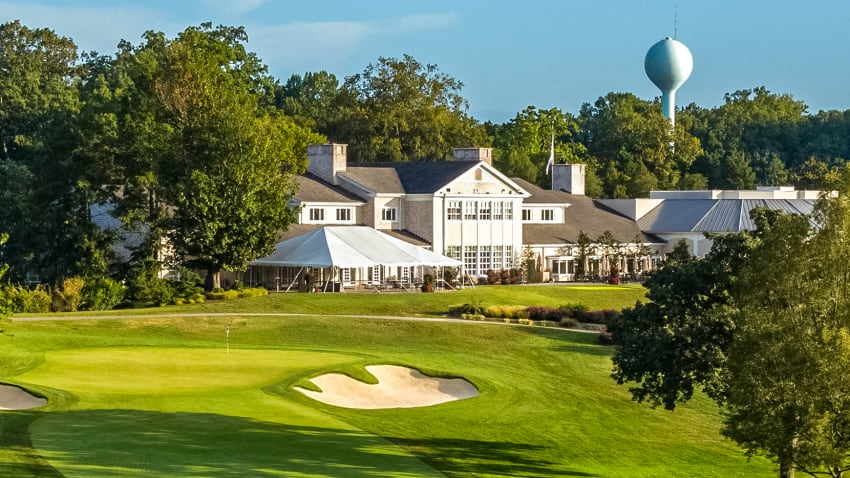The second stop in the FedExCup Playoffs goes to The First State, as the BMW Championship arrives at Wilmington (Del.) Country Club. While the course has more than a century of history and has hosted a variety of high-level events, this will be the first time the PGA TOUR visits.
Here are Five Things to Know about this new venue:
1. Rich History
Golf at Wilmington Country Club can be traced back to 1901. The Delaware Field Club, which provided members with opportunities to play baseball, football, tennis and cricket and had previously built a nine-hole course in nearby Elsmere, evolved into Wilmington Country Club that year, buying 129 acres of land in Wilmington and offering stock at $25 a share. Annual dues were also set at $25.
The original course was nine holes and carved out of a wheat field cleared by 25 workers using eight horses. Full construction took about two months and cost $2,000. Nearby land was meant to be reserved for wheat harvesting, but the board quickly saw golf as a greater source of revenue, so another nine holes were added for $850. The 5,700-yard course played as a par 72-and-a-half.
In the 1950s, Wilmington Country Club bought a new piece of land and handed the keys to Robert Trent Jones, one of the era’s preeminent golf architects. Jones created a beast, which is expected to play longer than 7,500 yards for this year’s BMW Championship.
While the South Course opened in the fall of 1959, the North Course followed roughly one year later with a shorter 6,721-yard design by Dick Wilson. The North Course may be shorter, but it also features smaller greens, narrower fairways and more sand than the South.
2. Flip It
While this will be Wilmington Country Club’s first professional event, its amateur history goes back over a century, as the original course hosted the 1913 U.S. Women’s Amateur. The new South Course followed with the 1965 and 1978 U.S. Junior Amateurs, the 1971 U.S. Amateur, the 1978 U.S. Girls’ Junior and the 2003 U.S. Mid-Amateur.
The 1971 U.S. Amateur, then a stroke-play event, produced Wilmington’s signature shot, one that is both the most famous in the club’s history and led to a re-routing of the layout. Canadian Gary Cowan, who’d also won the U.S. Amateur five years earlier, came to the 72nd hole with a one-shot lead over 19-year-old phenom Eddie Pearce, who’d won the 1968 U.S. Junior Amateur and returned to the final a year later. But Cowan yanked his drive into the left rough and found…
..
Click Here to Read the Full Original Article at Golfweek…
